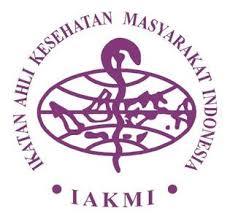Manajemen Bencana Gunung Merapi Berbasis Masyarakat
Abstract
Abstrak
Jumlah bencana alam di Yogyakarta dari 2010-2019 sebanyak 309 kejadian dimana bencana alam terbesarnya adalah letusan Gunung Merapi 2010 yang menyebabkan menyebabkan 1.705 jiwa luka-luka, 332 jiwa meninggal, 4.874 jiwa gangguan psikologis dan kerugiannya mencapai 7,3 triliun rupiah.. Tujuan dari penelitian ini adalah untuk mengetahui pelaksanaan program Destana sebagai upaya manajemen bencana berbasis masyarakat di Kawasan Rawan Bencana III yaitu Desa Glagaharjo. Jenis penelitian ini adalah penelitian deskriptif melalui pendekatan kuantitatif dan pendekatan kualitatif. Subyek penelitian ini terdiri dari informan utama yaitu Kepala Seksi Mitigasi Bencana BPBD Sleman dan Kepala Desa Glagaharjo, serta informan pendukung yaitu perwakilan masyarakat yang terlibat dalam penanganan bencana. Instrumen yang digunakan adalah lembar checklist dan panduan wawancara. Uji keabsahan data menggunakan triangulasi sumber. Data dianalisis dengan reduksi data, penyajian data, dan penarikan kesimpulan. Hasil menunjukkan bahwa implementasi komponen Desa Tangguh Bencana di Desa Glagaharjo adalah sarana prasarana (AS=33.3%; ATS=66.7%), penyelamatan dan evakuasi (AS=100%), pengelolaan sistem informasi(AS=100%), regulasi (AS=100%), perencanaan (AS=100%), kelembagaan (AS=80%; ATS=20%), pendanaan (AS=100%), pengembangan kapasitas (AS=85.7%; ATS=14.3%) dan penyelenggaraan penanggulangan bencana (AS=50%; ATS=16.7%; TA=33.3%). Total rekapitulasi indikator-indikator Desa Tangguh Bencana (AS=80%; ATS=14.3%; TA=5.7%). Simpulan dari penelitian ini adalah Desa Glagaharjo sudah cukup tangguh dalam menghadapi bencana Gunung Merapi dimana 80% indikator Desa Tangguh Bencana telah terlaksana.
Abstract
The number of natural disasters in Yogyakarta over the period 2010-2019 was 309 times, with the biggest natural disaster was the eruption of Merapi in 2010 which caused 246 died, 410.388 were displaced and lost by IDR 7.3 trillion. The purpose of this study was to determine the implementation of Disaster Resilient Village program as a community based disaster management effort in Disaster Prone Areas III in Glagaharjo Village. The type of this research was descriptive study through a quantitative and qualitative approach. The subjects of this study consists of the principal informants, the section chief of the disaster mitigation in BPBD Sleman and the village head Glagaharjo, and the support informants among the community representative involved in the treatment of the disaster. The instruments used were checklist and interview guides. Data validity test used source triangulation techniques. Data were analized with data reduction, data presentation, and verification. The results indicated that the implementation of Disaster Resilient Village components in Glagaharjo Village were the infrastructure (AS=33.3%; ATS=66.7%), rescue and evacuation (AS=100%), information systems manajement (AS=100%), regulation (AS=100%), planning (AS=100%), institutional (AS=80%; ATS=20%), funding (AS=100%), capacity development (AS=85.7%; ATS=14.3%) and disaster management arrangements (AS=50%; ATS=16.7%; TA=33.3%). The total recapitulation of Disaster Resilient Village indicators are AS=80%; ATS=14.3%; TA=5.7%). The conclusion of this study that the village of Glagaharjo is resilient enough in the face of Merapi eruption, of which 80 % indicators of Disaster Resilient Village have been implemented.




